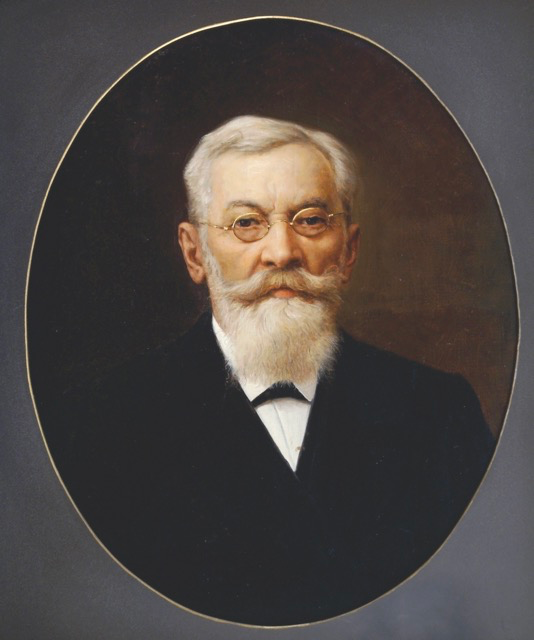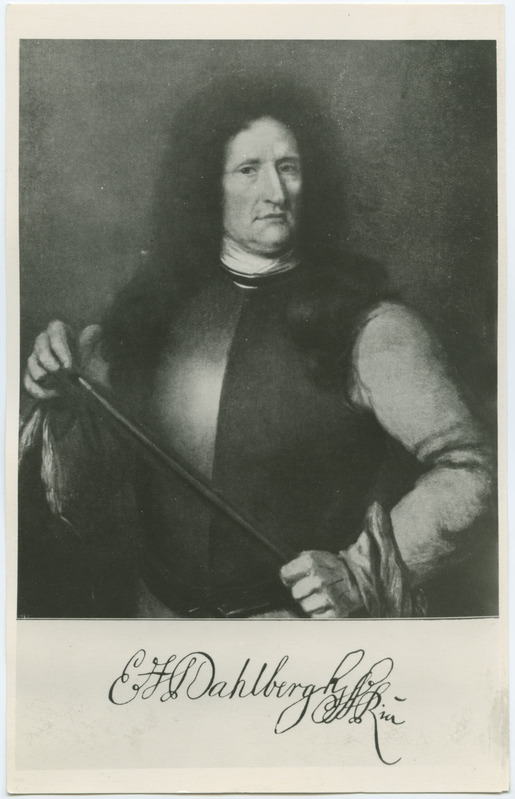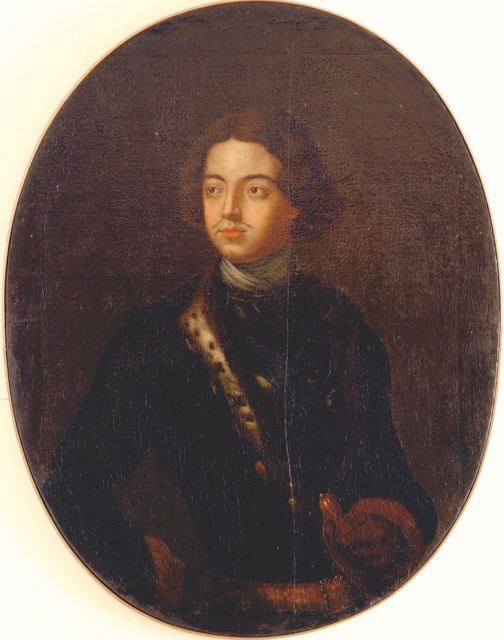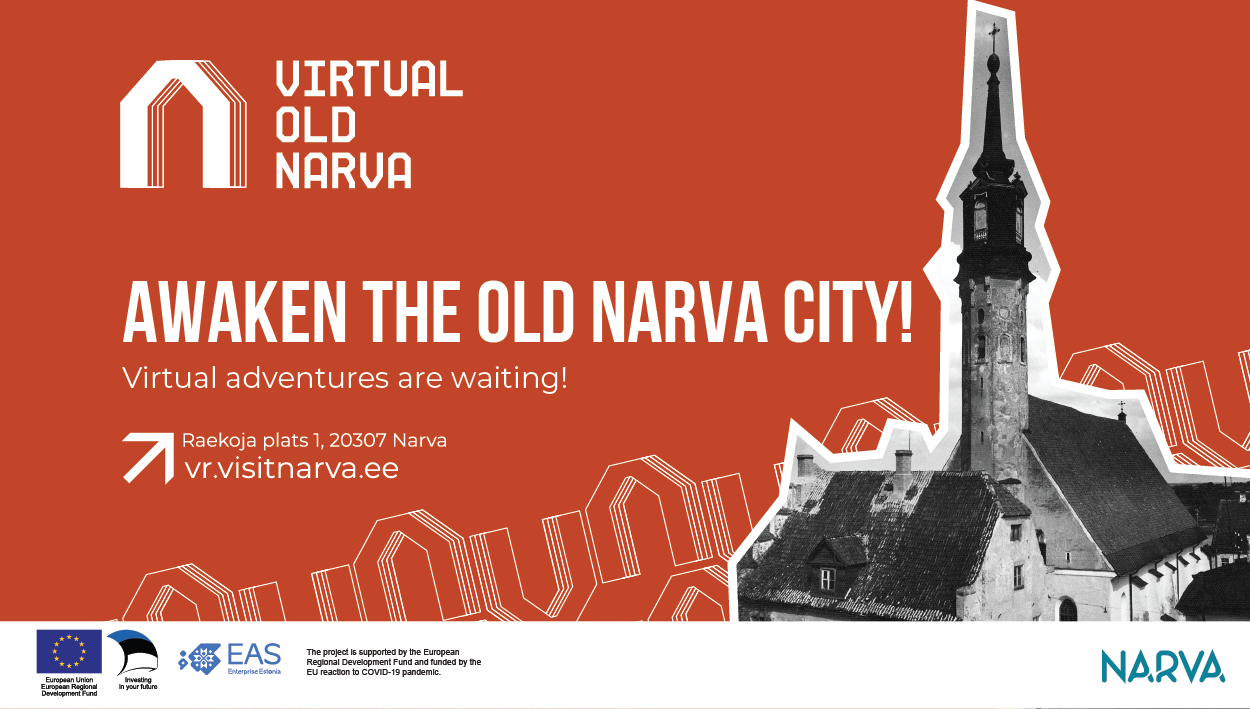Did you know that during a virtual time travel you can also hear fascinating stories from the life of locals? Isn’t it interesting to see Narva through the eyes of other people?
Have you heard anything about the Lavretsovs, a couple of patrons from Narva? Or why is there Sergey Lavretsov Street in the old town of Narva? And what role did Eric Dahlberg play in the history of the city of Narva?

Sergey Lavretsov financed the construction of Narva hospital, and it was on his initiative and with his support that a local maternity hospital was built here. In 1869, Sergei married Glafira, from whom he developed a passion for art. Together they collected the works of artists of Russia and Western Europe, finding paintings in the workshops of artists or getting them from art dealers. They also supported Estonian artists. When a considerable number of works gathered in their collection, they decided to open their house once a week for everyone interested. After Glafira’s death in 1913, a museum was opened in their former house, which at that time became one of the leading and most interesting provincial museums in Tsarist Russia. Despite the fact that the building on Rüütli Street was destroyed during the Second World War, and some works were either destroyed or lost, most of the art collection that belonged to the museum before the war was saved. Today, several works are in the Art Gallery of the Narva Museum. Also visit the Narva Museum and find out what works decorated the house of the Lavretsov family over a hundred years ago. The history of the Lavretsovs, together with many other local stories, will open up completely new sides of Narva for you and allow you to look at the history through the eyes of the people who lived in Narva at that time. You will also solve fascinating mysteries and visit places, some of which still can be found in Narva.

Eric Dahlberg, who made Narva unassailable, was one of the most educated officers of his time, serving as governor general of Livonia and Riga in 1696-1702, and then chancellor of the Academy in Tartu (now the University of Tartu). Over time, he became a key figure in securing the strategic cities of Sweden. He was especially famous for his defensive structures. Under his leadership, defense constractions in Gothenburg, Malmö, Kalmar, Karlskrona, Tallinn, Riga, Neumund, Wismarsi, Stade, Tartu, Kuressaare, Karlsten, as well as in Narva were repaired and updated. In 1681 Dahlberg presented three conceptual designs for the fortification of Narva to King Charles XI, from which his own solution was chosen. According to that the use of medieval city walls had to be abandoned and a new defensive area should be created, which significantly enlarged the city. The plan was to make Narva an unassailable city. Work began already in 1682. When the political situation in Europe deteriorated, the pace accelerated. However, by the beginning of the Northern War in 1700, work to strengthen the city’s defenses had not been completed. Naturally, when the Russians stormed Narva in 1704, they took advantage of that part of the fortress that had not yet been completed. After you have seen the exposition, go for a walk around the city to see several seemingly hidden places that have survived in Narva to this day. Find Bastion Honor and see where Peter the Great invaded Narva with his troops in 1904 after the collapse of the ramparts.

Other stories include the fascinating story of Anna Regina Kramer. When Peter the Great conquered Narva, the Kramer family was exiled to Russia in 1708. By the will of fate, Anna ended up in St. Petersburg, at the royal court. There she found herself among those close to the royal family, and over the years she would be entrusted with more and more responsible tasks. Anna returned to Narva only in 1728, where she remained until the end of her life. The Empress gave Anna the Joala manor, where Kreenholm manufactory was later built. She was also given full sole right to export logs from Narva, which was an exceptionally profitable business thanks to the Narva River. At that time, Narva was one of the largest timber processing centers in Northern Europe, so such a gift was worth its weight in gold. Local rumors have it that when Catherine II visited Estonia in 1764, she also visited Anna Kramer while passing through Narva. Please keep in mind that the story about Anna Kramer is just one of many stories. Since these are a kind of urban legends, which were much talked about in previous centuries, in many cases it is still worthwhile to be critical of the sources, because often reliable evidence has not been preserved.

If you want to know more, we are waiting for you at Narva Town Hall, at the virtual exhibition “New Life of Old Narva”.